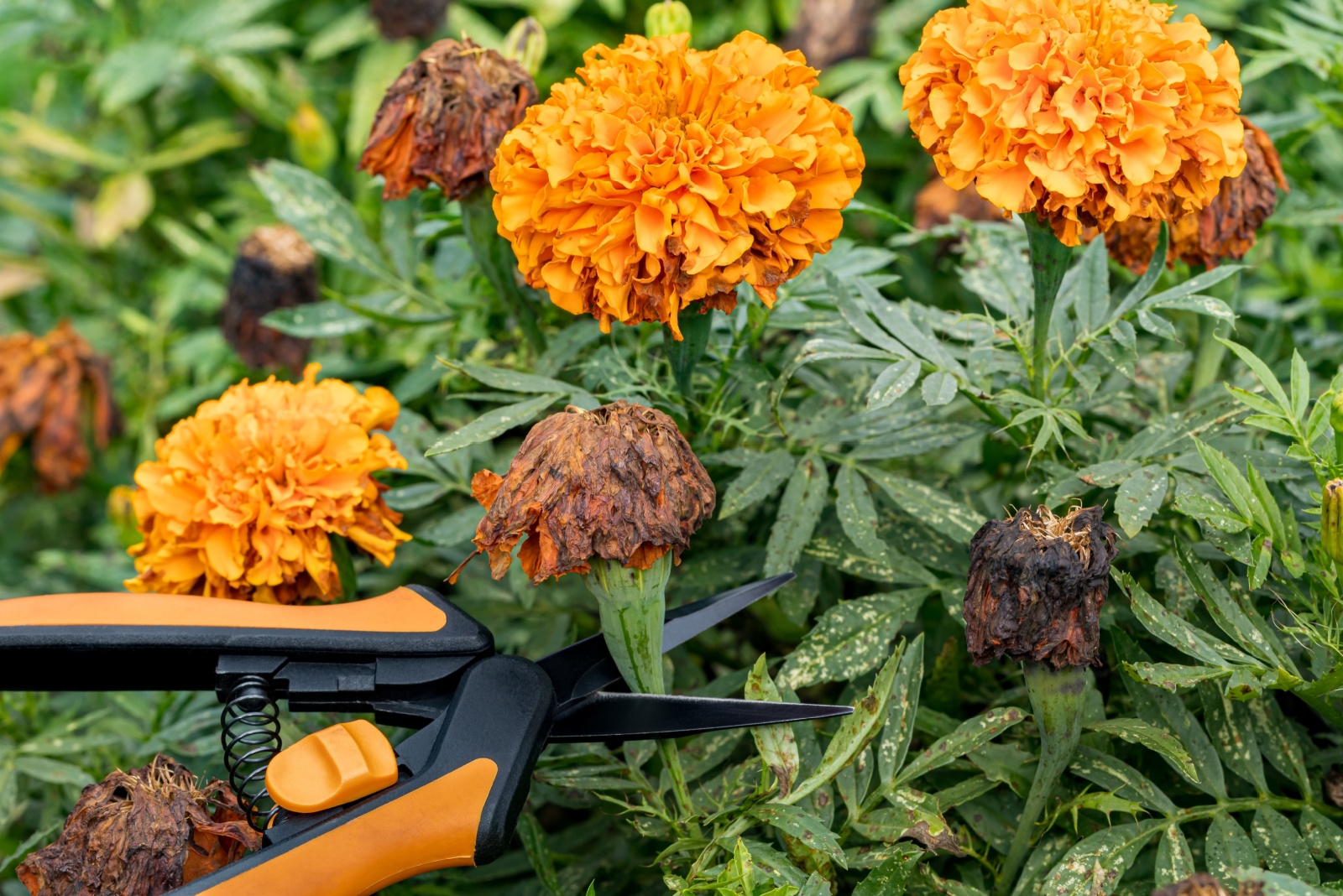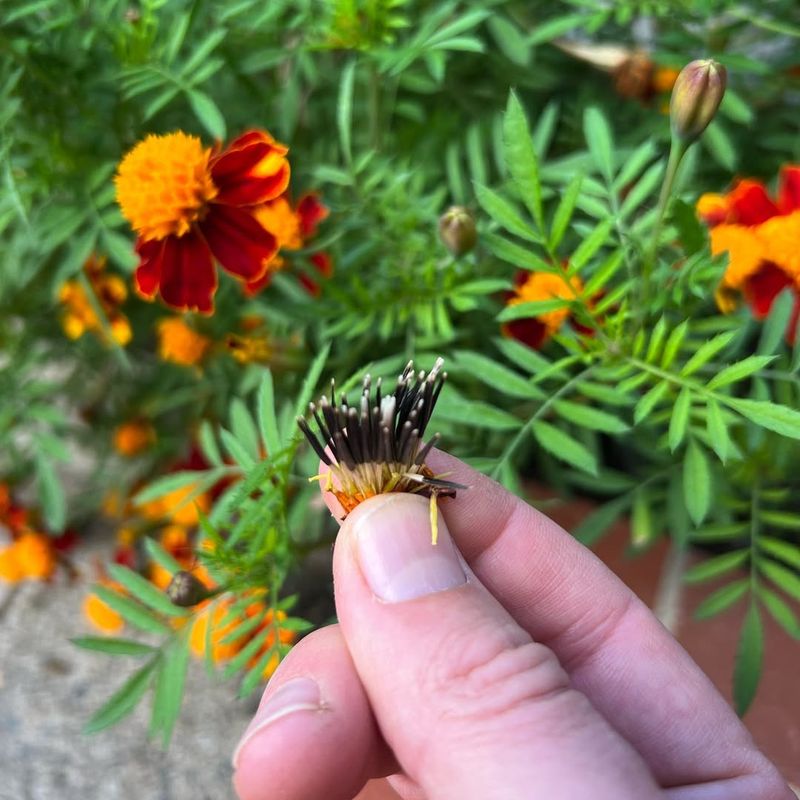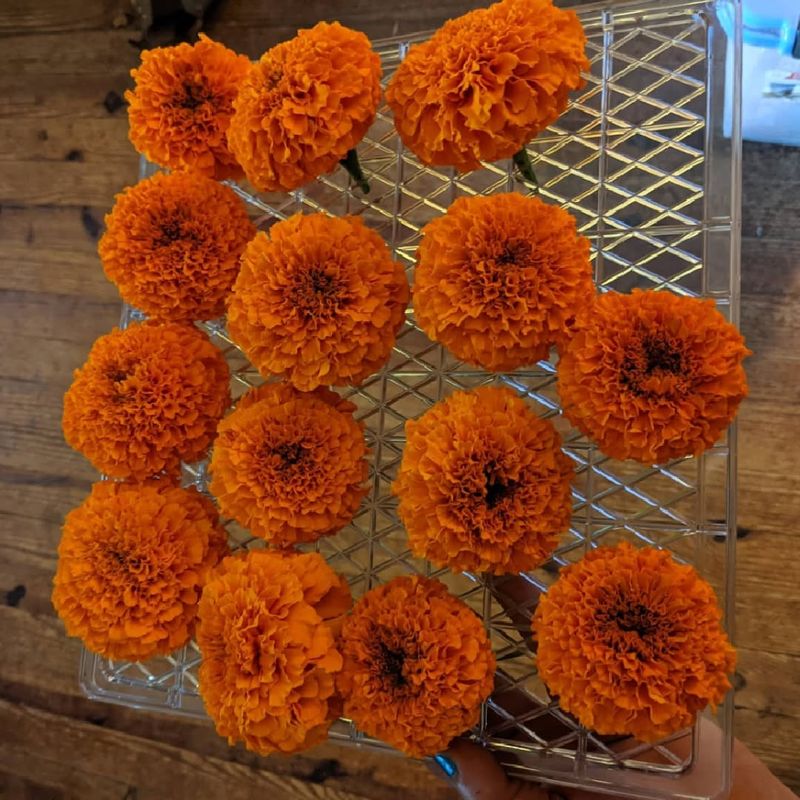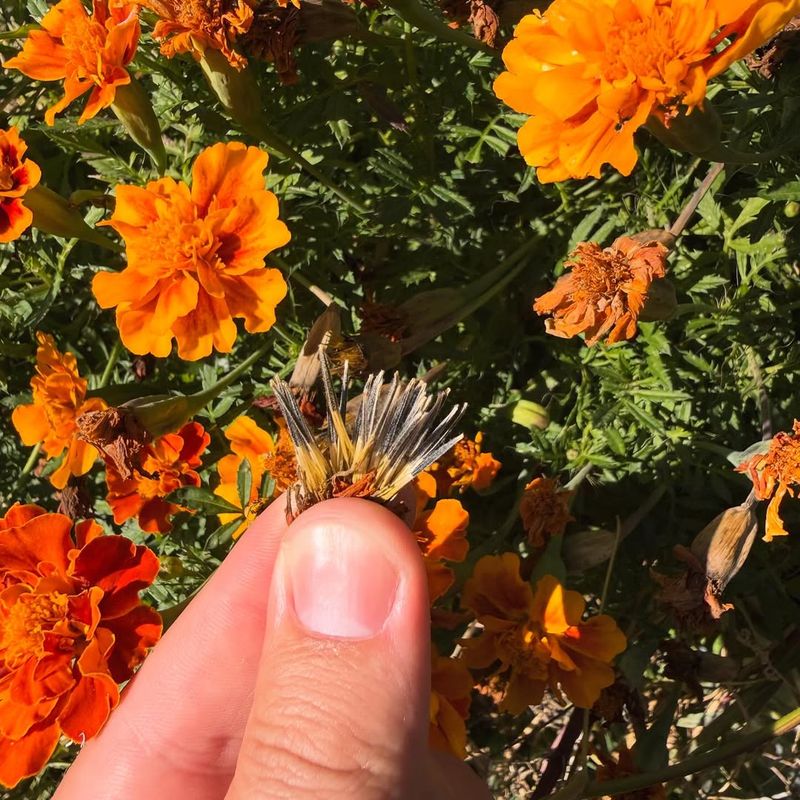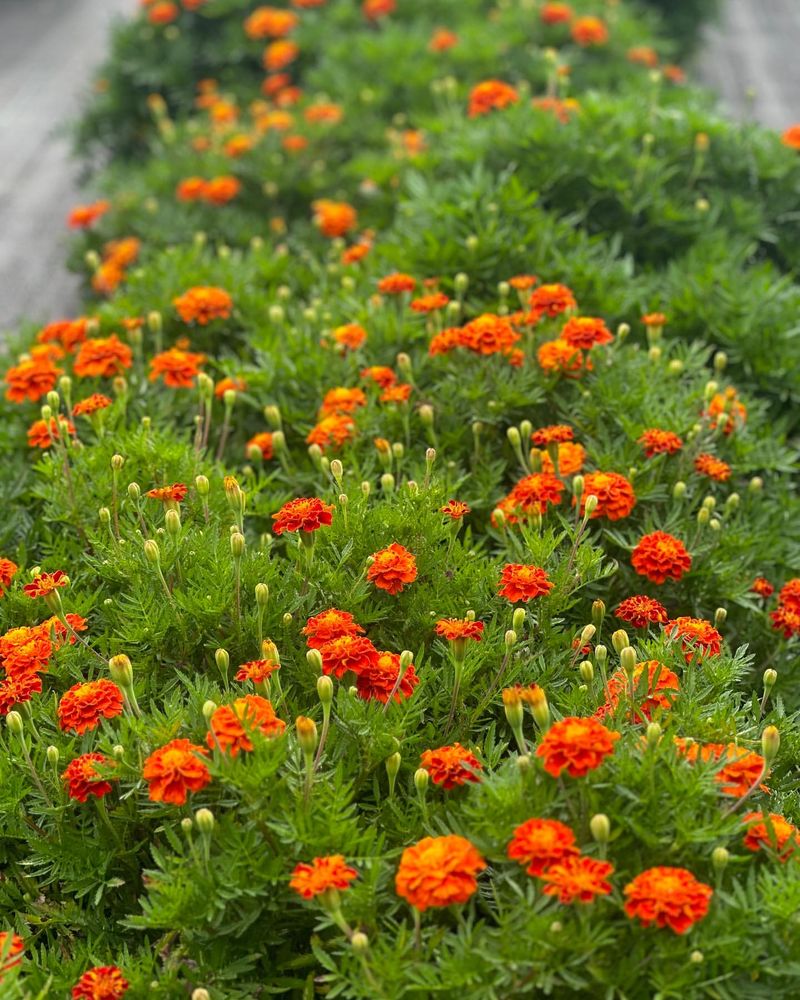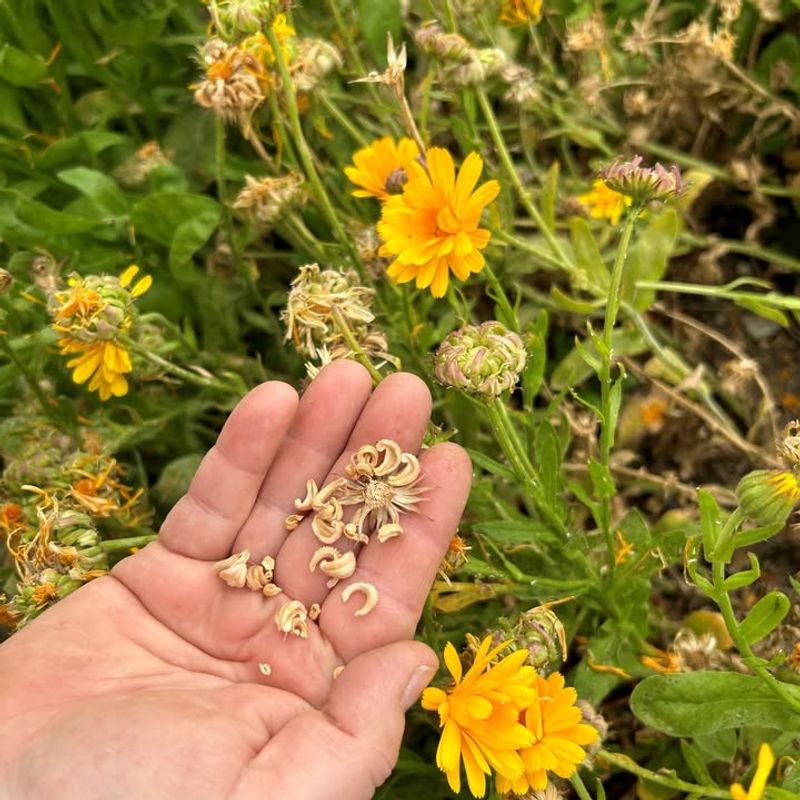Marigolds may be some of the toughest flowers in the garden, but in Oklahoma’s up-and-down weather, they still need a little nudge to keep the show going.
Savvy local gardeners have discovered one simple trick that keeps those golden blooms coming long after others call it quits.
With this easy habit, your marigolds won’t just hang on, they’ll glow brighter, fuller, and longer, turning your beds into a sunshine-colored spotlight well into the season.
Removing Spent Blooms Encourages New Growth
Oklahoma gardeners swear by deadheading, which means pinching off flowers once they start to wilt.
When you remove faded blooms, the plant stops putting energy into making seeds and focuses on producing fresh flowers instead.
Your marigolds will reward this simple effort with weeks of extra color.
Most gardeners check their plants every few days, snipping off any tired-looking flowers they spot.
It only takes a few minutes but makes your garden look amazing all season long.
Pinch Just Below The Flower Head
Finding the right spot to remove old blooms matters more than you might think.
Look for the point where the flower stem meets the main plant stem, then pinch or cut just above that junction.
This technique prevents ugly stubs from sticking up between your healthy flowers.
Some folks use small scissors or pruning shears, while others just use their fingers.
Either way works perfectly fine as long as you make a clean break without tearing the stem unnecessarily.
Oklahoma’s Heat Makes Deadheading Essential
Summers in Oklahoma can be brutal, with temperatures soaring past ninety degrees regularly.
Hot weather causes marigold blooms to fade much faster than they would in cooler climates, making regular deadheading absolutely necessary.
Without this care, your plants might stop flowering altogether by mid-July.
The combination of intense sun and occasional drought stress means Oklahoma marigolds need extra attention.
Removing wilted flowers helps plants conserve precious water and energy during those scorching afternoon hours when temperatures peak.
Deadhead In The Morning For Best Results
Timing your deadheading sessions can actually improve your results significantly.
Early morning works best because plants are fully hydrated from overnight dew and cooler temperatures, making them less stressed by the pruning process.
Working in the cool morning also keeps you comfortable while tending your garden.
Evening deadheading works too, but avoid the midday heat when plants are already struggling.
Many Oklahoma gardeners make it part of their morning coffee routine, spending ten peaceful minutes with their flowers before the day heats up.
Weekly Deadheading Keeps Blooms Coming
Consistency matters when maintaining marigolds throughout Oklahoma’s long growing season.
Setting up a weekly schedule ensures you never miss too many faded flowers, which could signal the plant to stop blooming entirely.
Some dedicated gardeners check their marigolds twice weekly during peak summer heat.
You’ll notice the difference within two weeks as fresh buds appear more frequently.
Think of it like mowing your lawn—regular maintenance keeps everything looking neat and encourages healthy growth patterns that benefit the entire plant.
Deadheading Prevents Disease Problems
Wilted flowers don’t just look unattractive—they can actually harbor harmful fungi and bacteria.
Oklahoma’s humidity, especially during summer thunderstorm season, creates perfect conditions for plant diseases to spread rapidly through wet, decaying blooms.
Removing spent flowers eliminates these potential infection sites before problems start.
You’ll notice fewer brown spots and healthier foliage when you stay on top of deadheading duties.
Clean plants also attract fewer pests like aphids, which often gather on weakened or withered plant tissue looking for easy meals.
French Marigolds Need More Frequent Attention
Did you know French marigolds produce smaller blooms than African varieties but flower much more abundantly?
These compact plants can be covered with dozens of blooms at once, which means they also need deadheading more often to maintain their appearance.
Oklahoma gardeners growing French marigolds often deadhead every three to four days during peak season.
The extra effort pays off with an incredibly dense display of color.
Their bushy growth habit makes them perfect for borders and containers where constant blooming really shows off.
Save Seeds Only After Blooming Season Ends
While deadheading keeps flowers coming, eventually you might want to collect seeds for next year’s garden.
Oklahoma gardeners recommend letting a few blooms go to seed only after the first fall frost approaches and you’re ready to stop the flowering cycle.
Allow selected flower heads to dry completely on the plant, turning brown and papery.
Then harvest the seeds inside for storage over winter.
This strategy gives you months of beautiful blooms while still preserving seeds for future planting without compromising your current display.
Fertilize After Heavy Deadheading Sessions
After removing lots of spent blooms, your marigolds appreciate a little nutritional boost to fuel their next round of flowering.
A light application of balanced fertilizer helps replace nutrients the plant used creating all those beautiful blooms you just removed.
Oklahoma gardeners often use water-soluble fertilizer diluted to half strength every two weeks during the growing season.
Avoid over-fertilizing, which can cause excessive leafy growth with fewer flowers.
The combination of regular deadheading and gentle feeding creates the perfect conditions for continuous, spectacular blooming all summer.

